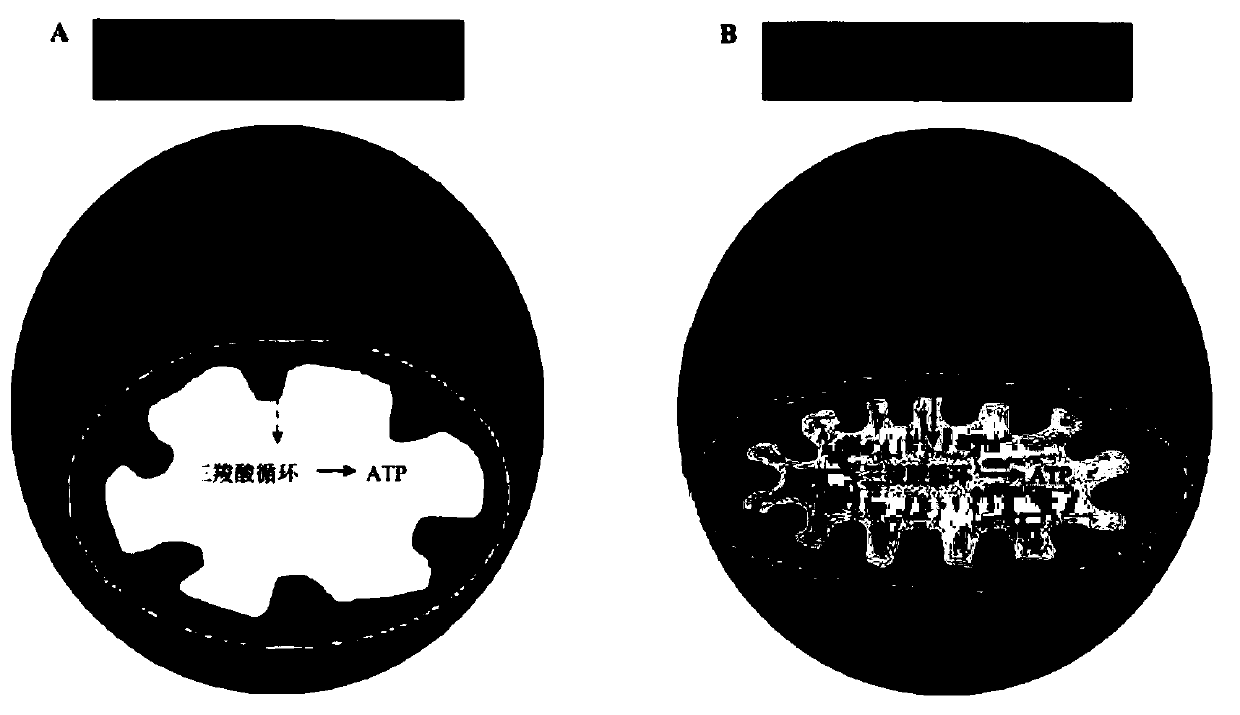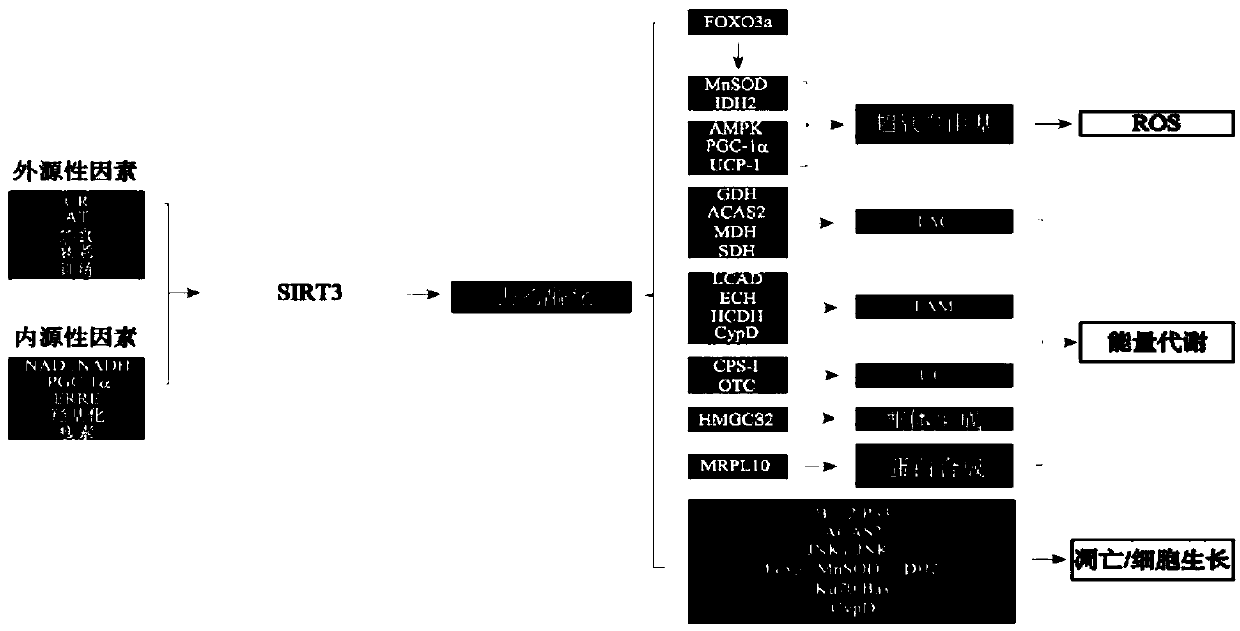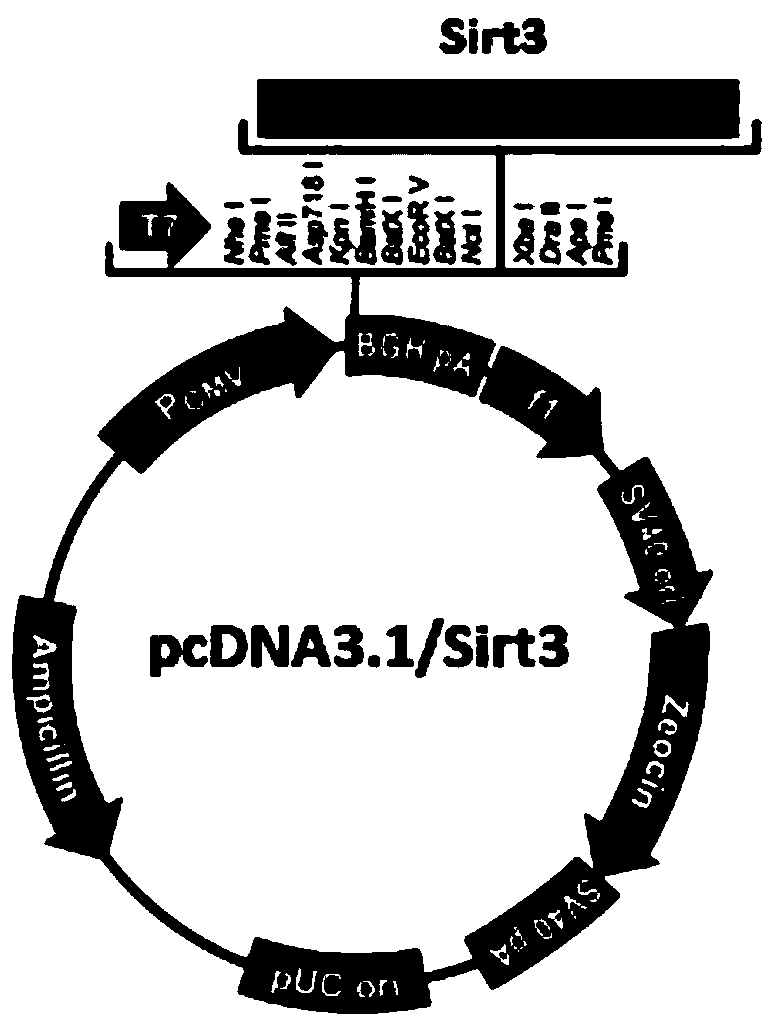Application of human sirt3 gene in stem cell differentiation inducing
A technology for inducing differentiation and stem cells, which is applied in the field of protein research and application mechanism, and can solve problems such as expression reduction
- Summary
- Abstract
- Description
- Claims
- Application Information
AI Technical Summary
Problems solved by technology
Method used
Image
Examples
Embodiment 1
[0032] Preparation of embodiment 1 sirt3 gene and plasmid construction
[0033] 1. Experimental materials and methods
[0034] 1.1 Cloning of sirt3 gene
[0035] Use primers to amplify the human sirt3 target gene, and purify and recover the PCR product. The specific operation steps are as follows:
[0036] sirt3 primer sequence: F: 5′-ATCGATGGGCTTGAGAGAGT-3′
[0037] R: 3′-AGGTTCCATGAGCTTCAACC-5′
[0038] 10×PCR Buffer 5.00 μl DNA polymerase 0.25 μl dNTPs (2.5mM) 2.00 μl MgCl 2
1.50 μl UL43-for (10μM) 1.00 μl UL43-rev (10 μM) 1.00 μl template 4.00 μl wxya 2 o
12.75 μl total 25.00 μl
[0039] PCR condition setting: 94°C for 5 min, 94°C for 1 min, 55°C for 1 min, 72°C for 1 min for 30 s, 30 cycles; 72°C for 10 min. After PCR, the PCR products were stored at 4°C and separated and identified by 1% agarose gel electrophoresis.
[0040] 1.2. Recovery and purification of PCR products
[0041] PCR p...
Embodiment 2
[0074] Embodiment two transfection and expression of sirt3 gene
[0075] 1. Experimental materials and methods
[0076] 1.1. Lipofectamine transfection
[0077] Take 6-8 week male SD rats, take femoral bone marrow on both sides, prepare it into a single cell suspension, and inoculate the isolated cells into L-DMEM medium, the composition of which is fetal bovine serum (FBS), volume fraction is 0.1. Cultured in an incubator under the following conditions: 37°C, 5% CO 2 . Cells can be purified by the differential attachment method, and subcultured when 90% confluent. Take the third generation MSC S For transfection, refer to the optimized transfection conditions after screening: cell density 80%-90% confluence, DNA concentration 6.0 μm / ml, DNA:Lipofeetamine 2000 (trg:trL)=3:4. Six hours after transfection, the L-DMEM medium containing FBS (volume fraction 0.1) was replaced and the incubation was continued. Cells were collected 48 h after transfection.
[0078] 1.2. Weste...
Embodiment 3
[0085] Example 3 Effect of sirt3 on cells
[0086] 1. Experimental materials and methods
[0087] 1.1. Mitochondrial fluorescence staining
[0088] After the plasmid pc-DNA3.1-sirt3 was transfected into MSCs cells, they were cultured in a CO2 incubator at 37 °C for 4 h, and the anti-serum-free medium was replaced with normal medium to continue the culture. Mitochondria were stained with MitoTracker Green FM (Invitrogen) around 48 h, and the green fluorescence was observed with a fluorescence microscope and photographed.
[0089] 1.2. Determination of ATP content in cells
[0090] Intracellular ATP content was measured using a luciferin-luciferase reaction with the ATP Bioluminescence Somatic Assay Kit (Sigma). Cells were harvested at 0, 12, 24, 36, 48 h and suspended in KRH buffer containing 0.1 mM glucose and 0.2% BSA. and incubated at 37°C in a shaking water bath. Luminescence was measured immediately after adding the assay mix containing luciferin and luciferase in a b...
PUM
 Login to View More
Login to View More Abstract
Description
Claims
Application Information
 Login to View More
Login to View More - R&D
- Intellectual Property
- Life Sciences
- Materials
- Tech Scout
- Unparalleled Data Quality
- Higher Quality Content
- 60% Fewer Hallucinations
Browse by: Latest US Patents, China's latest patents, Technical Efficacy Thesaurus, Application Domain, Technology Topic, Popular Technical Reports.
© 2025 PatSnap. All rights reserved.Legal|Privacy policy|Modern Slavery Act Transparency Statement|Sitemap|About US| Contact US: help@patsnap.com



